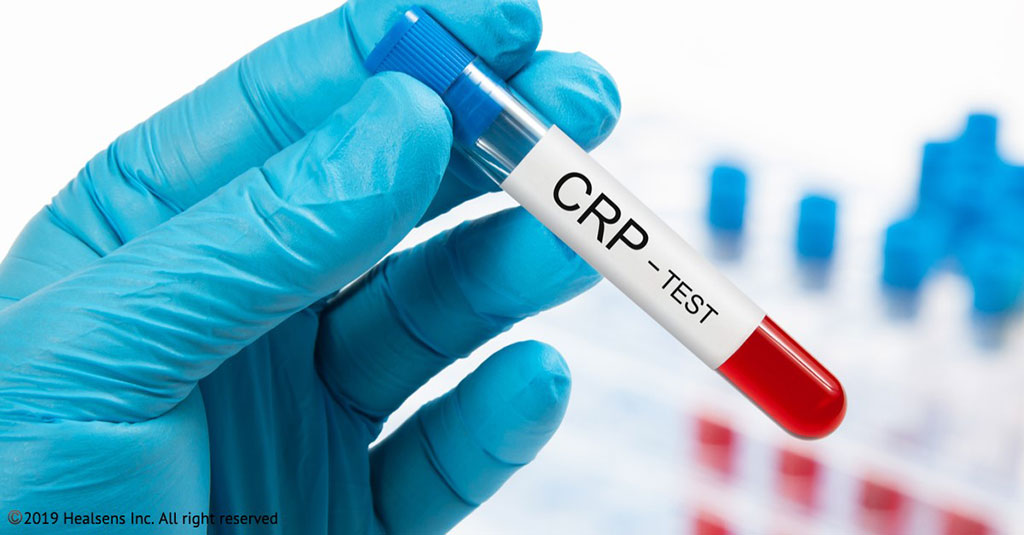Biomarkers Evaluated in Children with Community-Acquired Pneumonia
By LabMedica International staff writers
Posted on 01 Jun 2020
Community acquired pneumonia (CAP) is one of the most common conditions treated by pediatricians, yet predicting disease severity and prognosis is often difficult at the initial presentation.Posted on 01 Jun 2020
Previous studies on adults indicate that the biomarkers C-reactive protein (CRP), white blood cell (WBC) count, absolute neutrophil count (ANC), and procalcitonin may be associated with disease severity. Whether the same was true in children aged three months to 18 years with suspected CAP who presented to the emergency department (ED) has been investigated.

Image: The C-reactive protein (CRP) test was one of the biomarkers evaluated in children with community-acquired pneumonia (Photo courtesy of Healsens Digital Preventive Care).
Pediatricians at the Feinberg School of Medicine (Chicago, IL, USA) and their colleagues performed a prospective cohort study of 477 children 3 months to 18 years of age (mean age 5.6 years, 52.6% male, 67% white) with CAP in the emergency department. The primary outcome was disease severity: mild (discharged from the hospital), mild-moderate (hospitalized but not moderate-severe or severe), moderate-severe (e.g., hospitalized with receipt of intravenous fluids, supplemental oxygen, complicated pneumonia), and severe (e.g., intensive care, vasoactive infusions, chest drainage, severe sepsis). Outcomes were examined within the cohort with suspected CAP and in a subset with radiographic CAP.
The scientists reported that there were no statistical differences in median WBC count, CRP level, ANC, or procalcitonin level across four different categories of disease severity. However, when specific outcomes were examined, CRP and procalcitonin levels were higher in those developing complicated pneumonia requiring chest tube placement and sepsis requiring vasoactive medications. Additionally, all biomarkers had high negative predictive values (NPV) in differentiating severe from non-severe disease and may therefore be useful in ruling out severe outcomes.
In analyses adjusted for age, antibiotic use, fever duration, and viral pathogen detection, CRP was associated with moderate-severe disease (odds ratio 1.12). CRP and procalcitonin revealed good discrimination of children with empyema requiring chest drainage (AUC: 0.83) and sepsis with vasoactive infusions (CRP AUC: 0.74; procalcitonin AUC: 0.78), although prevalence of these outcomes was low.
The authors concluded that WBC count, ANC, CRP, and procalcitonin are generally not useful to discriminate non-severe from severe disease in children with CAP, although CRP and procalcitonin may have some utility in predicting the most severe outcomes. The study was published in the May, 2020 issue of the journal Pediatrics.
Related Links:
Feinberg School of Medicine














